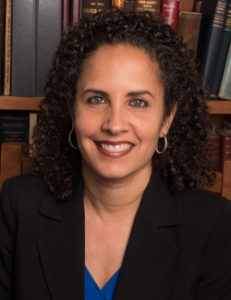Monthly Archives: June 2022
Jun 16, 2022 Richard MurphyAdministrative Law
Sure, we all know about Ex parte Young, the 1908 Supreme Court precedent that stands broadly for the proposition that plaintiffs can, without any express statutory cause of action, invoke a form of “nonstatutory review” to sue government officials to enjoin unconstitutional actions. But familiarity has not brought clarity regarding this cornerstone of judicial control of official action. Questions have lingered for a century regarding Ex parte Young’s evasion of the 11th Amendment, the source of its cause of action, its proper scope, and its jurisdictional basis. In just the last year, Ex parte Young made a surprisingly large splash in the news for a 113-year-old federal courts decision as the justices have sharply disputed its parameters in the challenge to Texas’s six-week ban on abortions that culiminated in Whole Woman’s Health v. Jackson (2021). The scope of the federal courts’ equitable power associated with Ex parte Young remains remarkably unsettled.
The Supreme Court has told us that, to determine the scope of the federal courts’ equitable powers, we should look to history—and especially to the English High Court of Chancery circa 1789. In their richly detailed and fascinating article, The Common Law Origins of Ex parte Young, Professor James Pfander and Jacob Wentzel contend that important and influential scholarship, consistent with this guidance, has deployed a narrow form of “equitable originalism” that threatens to unduly limit judicial power to issue injunctive relief to stop constitutional violations. Continue reading "Whence Ex parte Young?"
Jun 15, 2022 Kerri Lynn StoneWork Law
Pat K. Chew’s Hiding Sexual Harassment: Myths and Realities exhorts the reader to view sex discrimination’s and sexual harassment’s invisibility as being among their most nefarious attributes. This piece is convincing and thought-provoking. As the #MeToo movement hits a crossroads, this article deserves to be centered in the literature, and in any discussion of workplace sex discrimination and sexual harassment.
The article is organized as a series of myths: “Sex discrimination is no longer prevalent,” “Sexual harassment is no longer prevalent,” and “Sexual harassers are stopped and punished,” and upon reflection, it does appear that these are still widely-held societal beliefs. By probing into why these beliefs persist despite so much evidence to the contrary and into how they operate to obscure and amplify the harm caused by sex discrimination and sexual harassment, this piece yields a novel angle from which to confront these problems. Continue reading "Behind the Myths: Paving the Way for Real Redress of Sexual Harassment and Sex Discrimination in the Workplace"
Jun 14, 2022 Gerry W. BeyerTrusts & Estates
David Horton & Reid Kress Weisbord,
Heir Hunting, 169
U. Pa. L. Rev. 383 (2021).
Heir hunting. This slightly ominous term refers to the practice of sophisticated individuals and companies scouring probate filings, conducting genealogical research, and contracting with heirs of intestate decedents to provide help with probate proceedings in exchange for a cut of their inheritance. The practice originated in 1850s England before crossing over to the United States, and despite the prevalence of heir hunting, its legal treatment is murky at best. Academic scholars have failed to give it the attention its longevity would seem to warrant. Professors David Horton and Reid Kress Weisbord rectify this neglect and seek to understand the reality of heir hunting through an empirical study of San Francisco County probate filings. The professors’ findings guide their critique of heir hunting, and they propose legislation that provides a time and place for the practice in the present day and mitigates the serious harms it can cause.
The legal history of heir hunting is complex. Courts initially invalidated heir hunting contracts under the doctrine of champerty, which prohibits a third party from pursuing another’s legal claim. However, courts did not always employ the same logic when they struck down these contracts. Some courts voided the contracts because they encouraged litigation, and others pointed to heir hunters’ meddling with the duties of actual estate administrators. To make sense of these discrepancies, Professors Horton and Weisbord distinguish the differences in court opinions with two ideas: the “litigiousness” theory of champerty and the “interference” theory of champerty. Continue reading "The Double-Edged Sword of Hunting Heirs"
Jun 13, 2022 Nicholson PriceTechnology Law
Rachel Sachs,
The Accidental Innovation Policymakers, __
Duke L.J. _ (March 27, 2022 draft, forthcoming 2022), available at
SSRN.Innovation policy is hard. Getting it right requires balancing incentives for developers, consumer access, rewards for later innovators, safety concerns, and other factors. This balance is vitally important and wickedly difficult—even when it’s the focus of concerted, careful, informed effort. How well should we expect it to go when innovation policy is made by accident?
Enter The Accidental Innovation Policymakers, an illuminating new project by Professor Rachel Sachs. Sachs persuasively shows how Congress has repeatedly made substantial changes to innovation policy, seemingly without talking about, seriously considering, or even recognizing that it is doing so. There’s an asymmetry to this accident, and it favors industry. When Congress wants to directly promote innovation, it explicitly gives rewards to the biomedical industry. When Congress focuses on other matters such as patient finances and happens to increase the rewards for biomedical innovation by embiggening the market, no one mentions it. But when Congress, focusing on patient finances, tries to rein in prices and thus decrease prices for industry, drugmakers scream bloody murder and claim that the engines of progress will grind to a halt. This legislative dynamic is off-kilter. It demands understanding and options for fixes. Sachs provides both. Continue reading "Congressional Myopia in Biomedical Innovation Policy"
Jun 10, 2022 Suzette M. MalveauxCourts Law
This season I was captured by an article offering a new lens to analyze the precarious state of consumer, employment discrimination, civil rights, and other substantive claims in the U.S. civil litigation system. Brooke Coleman’s Endangered Claims reminds the reader to consider how such rights—increasingly vulnerable to obstructionist policies and decisions by the federal rule makers, the Supreme Court, and Congress—fare in an ecosystem that favors the privileged. Coleman analogizes claims and claimants in the court system to endangered species who must adapt, migrate, or suffer extinction in a Darwinian world driven by “survival of the fittest.” She illustrates how a system titled “civil” is hardly that, looking more like a brutal story of evolution where the strong devour the weak and the latter must adapt or die.
The analogy reveals that the values underlying much of modern procedural reform prefer parties with greater power and money, are anchored in a restrictive rather than liberal ethos, and undermine court access and promotion of meritorious claims—the primary goals justifying the Federal Rules of Civil Procedure in 1938. Coleman challenges policymakers to consider the effect of procedural rules and doctrine on “endangered” claims, as a conservationist would consider the effect of environmental policies on endangered species. Continue reading "Endangered Claims: How the U.S. Civil Procedure System Mimics the Wild"
Jun 9, 2022 Dorothy BrownTax Law
Professor Goldburn Maynard’s excellent Essay: Biden’s Gambit: Advancing Racial Equity While Relying on a Race-Neutral Tax Code, analyzes the Biden’s Administrations efforts to advance racial equity through the American Rescue Plan Act (ARPA) enacted by Congress and signed into law on March 11, 2021.
The first executive order that President Biden signed once sworn into office was Executive Order No. 13,985, designed to advance racial equity throughout his Administration including various federal agencies. ARPA contains some provisions that exemplify the language and spirit of Executive Order No. 13,985. That set the new Administration on a collision course with the Department of the Treasury (Treasury) and the Internal Revenue Service (IRS), which have both been devoted to the idea of colorblindness when it comes to tax data. The IRS for example does not publish statistics by race, even though it has done so by age and gender. As Professor Maynard points out, Biden Administration efforts also conflicted with federal courts, which similarly operate with a colorblind jurisprudence. In Professor Maynard’s observation, parts of ARPA, such as distributing aid through the tax system, only indirectly and inadequately pursued racial equity goals. Others, such as debt relief for socially disadvantaged farmers or ranchers, were colorblind casualties.
As Professor Maynard points out, racial equity does not rely on equal treatment, but fairness in treatment including access to resources. Racial equity seeks to address historical disparities and minimize or eliminate systemic racism. Continue reading "The Biden Administration’s Racial Equity Challenges"
Jun 8, 2022 Jedidiah KronckeLegal History
Yzes Dezalay and Bryant Garth have been producing theoretically and methodologically innovative work on lawyers for nearly three decades. Their latest collaboration, Law as Reproduction and Revolution, extends their commitment to understanding the global and comparative dynamics of modern legal professions with greater ambition than any of their now classic works.
Here Dezalay and Garth (D&G) seek nothing less than to produce a global framework for understanding the modern production of elite lawyers. They build a theoretical framework for understanding how legal professions reproduce themselves in times of social change, in large part by developing critical histories of the legal professions in several European countries and the United States. They then illustrate how this framework helps explain 20th century changes in the legal professions of India, Hong Kong, China, South Korea and Japan—especially as impacted by interpretations of modern US legal professionalism. Continue reading "(Familial) Meritocracy and (Non-)Revolutionary Change: Reproducing Inequality in Modern Legal Professions"
Jun 7, 2022 Sara BroninProperty
Transportation policy is often overlooked in the legal academy. As far as I can tell, there are no traditional casebooks on the subject, no academic law blogs focusing on it, and no courses at the major law schools whose course catalogs I just happened to search.
Yet our transportation choices are hugely important. They shape our access to jobs, housing, schools, and economic opportunity. They impact our quality of life and our independence. From whether the mayor is fixing the potholes or whether the President will pass the infrastructure bill, transportation is the subject of constant debate at all levels of government.
A recent Iowa Law Review symposium, The Future of Law and Transportation, shone new light on the array of legal issues embedded in transportation decisions. It resulted in thirteen essays covering everything from the auto loan crisis to structural subsidies of sprawl. Among these, I think Reclaiming the Streets, by Vanessa Casado Pérez is especially worth a read because it deals with something most of us encounter every day but rarely consider—sidewalks. Continue reading "Where the Sidewalk Begins"
Jun 6, 2022 Melissa MortazaviLegal Profession
In today’s political climate, railing against the intellectual (not economic) elite has reached an anti-expertise fever pitch. It might be tempting in this climate to dismiss Benjamin Barton’s forthcoming book, The Credentialed Court: Inside the Cloistered Elite World of American Justice, as just another such diatribe. It is not. Instead, Barton’s book proves what scholars have long intuited: that while the Supreme Court facially appears more diverse than in the past, in other ways the court has rarely been so homogenous. Plus, it is such a juicy and delightful read you won’t feel like you’re reading for work.
Ben Barton’s book is a combination of straightforward data and entertaining storytelling. The first few chapters are a delicious highlights reel of the early Supreme Court appointees, full of colorful detail and choice tidbits—from a pro-football player to the story of a self-made immigrant who rocked the constitutional convention, won George Washington’s trust, and married into a prominent family – why it’s the stuff musicals are made of (hint: it’s not Alexander Hamilton)! Barton presents all this to argue that past Supreme Court Justices weren’t uniformly studious or bookish but zany, original, and more accomplished in other fields. Continue reading "Homogenous Diversity"
Jun 3, 2022 Kristina NiedringhausLexLibrarianship and Legal Technology
Law students and attorneys often wonder if it matters whether they use United States Code Service (USCS), a Matthew Bender publication also available on Lexis+, or United States Code Annotated (USCA), a Thomson Reuters publication also available on Westlaw Edge. In 1L legal research classes, I often field the question about what the differences are between the publications. “They are both the US Code, right?” is a common refrain. The traditional lore, passed on to law students, was that USCA strove to provide an annotation for every relevant case while USCS strove to provide annotations to the “best” cases. Accordingly, USCA was said to contain a greater number of annotations and USCS was more selective. I recall being taught this in law school. However, like much folklore, the foundations for this assertion are becoming lost with time and it is unclear whether this represents the current state of the two annotated codes. The product page for the print edition of USCA states that the set has “comprehensive case annotations.” Similarly, the product page for the print version of the USCS states that it is “the most comprehensive” set. We are left to determine for ourselves the meaning of “comprehensive.” We will talk more about this later, but it is important to note that USCS case annotations include administrative decisions while USCA case annotations do not.
Ms. Marcum’s research explores whether there is a significant difference between the annotations found in USCA and USCS. Does it matter which annotated code the researcher uses? Should a thorough researcher use both? Most people would expect some unique case annotations in each annotated code with a fair amount of overlap between the two sets. The surprising results were that out of 9164 case annotations for 23 statutes, 6748 of the annotations were unique to either USCS or USCA. Of the 9164 case annotations, 73.6% of them were unique and only listed in one of the annotated codes. Most researchers will be shocked by the small amount of overlap between the two publications. One could anticipate that this percentage would be statistically significant, and Ms. Marcum confirms this is true using a Wilcoxon T test. Continue reading "Checking Annotations in both USCS and USCA: Necessary or Redundant?"















